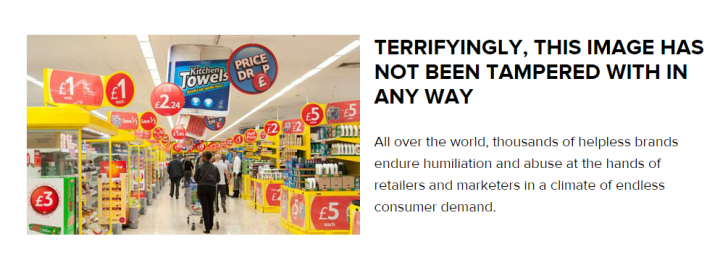Getting Beyond Black Friday Marketing Gimmicks
Anyone who works in marketing or is looking for opportunities to tie a client’s products into a wildly popular gimmick is salivating over the successes of this month’s annual Black Friday events — so much so that lots of companies start Black Friday on the Monday before Thanksgiving, or even in the beginning of November.
And it’s not just Black Friday anymore. It’s Small Business Saturday, Cyber Monday, Giving Tuesday. There’s an opportunity for practically every type of business to gain a cash-in opportunity. And the sales are all extended straight through December.
As a marketer, Black Friday doesn’t just seem like a must do, it is a must do. If I don’t work with clients to offer promotions or sales, I’ve missed out on an opportunity to get in touch with their audiences.
But in a world that is already hyper-connected and over-stimulated, gimmicks often conjure my cynical side. I try to get over it by thinking about the meaning of the holiday that triggered the massive rush to the market, but I also look for examples of how I and other companies can get creative, stepping away from the same old shtick, and actually trying something a little more “value-added” for my clients’ community.
Admittedly, this year, I started out doing the same ol’, same old. What’s the best offer you can make to get clients in the door? I mean, that’s fair, but there are a lot of companies vying for my clients’ customers so it’s important that they are able to catch their customers’ attention.
And sometimes, that means going bigger than big discounts.
Diving into the details about the origin of Black Friday didn’t help. It was a fruitless effort to find a positive message. The very website BlackFriday.com is meant as a place to register and collect all the available sales coupons and discount offers.
It confirmed to me what I thought I knew — that Black Friday is actually related to the bottom line — the day after Thanksgiving is generally the shopping day when department stores go into the black. Conversely, it also came to be known by a less inspirational tale — as the day the Philadelphia police officers lamented the greater number of accidents expected as a result of people traveling — probably to and from stores.
But as a generally happy person, even when my cynical side takes over, something will always catch my attention and bring me back to this humorous thing we call life, and that’s what I try to think about for marketing brainstorms.
This year, I got a little dose of inspiration from an article about Black Friday marketing promotions in the United Kingdom. That’s right, the nation across the pond which America’s founders abandoned in hope of pursuing liberty and freedom.
Some of these early founders, after leaving Plymouth, England, arrived on the shores of Massachusetts, and not really knowing how to survive the harsh winter, died. The remainder received help from the natives, and the next year threw a big party to thank God for the harvest, and for being saved by the Indians. That was in 1621.
Granted, the origin of Thanksgiving actually goes back a little further than that, but for those of us who had to cut out colored paper turkeys and Pilgrim hats and belt buckles and head dresses as kids, this isn’t a totally inaccurate tale of how Thanksgiving was created.
In any case, it’s still funny that the British have co-opted the shopping day after Thanksgiving (and actually many Britons with ties to the U.S. and Canada do celebrate a Thanksgiving harvest festival. They must be celebrating all the people who left).
The seeming irony of the British digging into the Black Friday shopping culture was not lost on one British marketer. And he made me happy with his outlook:
As it stands, Black Friday is an entirely artificial marketer’s construct, relating to a specific date in the US calendar, which has zero relevance this side of the Atlantic. …
Instead of following the traditional Black Friday deals model, companies should be looking for innovative and creative ways to bolster their relationship with customers – valuable customers – during the holiday season. Apple, for example, has famously offered Black Friday gift cards instead of discounts on its products – encouraging purchases in a way that doesn’t devalue the brand.
I’d argue that it’s less a matter of abandoning Black Friday and more of switching to a more effective and sustainable alternative that sparks excitement.
An effective and (keyword:) sustainable alternative. I couldn’t agree more.
And here’s what I love about reading blogs — there’s always someone (if you dig beneath the trolls) who makes an even better point in the comments than the original article. This article benefited from that as well, and one commenter added this distinctly British way of looking at the world.
That’s a marketing company with a clever take. They created an entire website just for this pitch. Of course, they’re marketers. They do what marketer do — find clients. But if their way of expressing themselves is to show their clients that they think outside of the box, well, as a British company at a loss for how to manage Black Friday, I’d probably give them a look.
And their goal is good too — they are demonstrating that they want their clients to do more than just offer a sale for Black Friday. That’s true of all marketing, and this applies particularly to Black Friday, as much as any other marketing trigger, returning to your mission is the answer.
What is your set of values? Who do you want to reach? What do you want them to think of when they think about you? And how do your products and services reinforce that cycle?
That’s the root of finding the right offer to make to your clients and of building your clientele over time.
For some companies, they may want to make a gesture in the name of a client. For others, they may benefit from being present when people make dramatic achievements in their lives.
It starts with knowing the mission and the values of your brand. And it is so often lost on companies who haven’t made the determination of what those two guideposts ought to be.
For shoppers, in the end, there will always be a sale that is too good to be true — and if they’re in the market for a product and you’ve got one — then go ahead, give them the chance to close the deal.
But in the process think about why you’re in business, and decide if what you’re giving your clients reflects your values. And not just in the products you sell or the words you say, but in the actions you take. That becomes the best sales pitch you can make.

